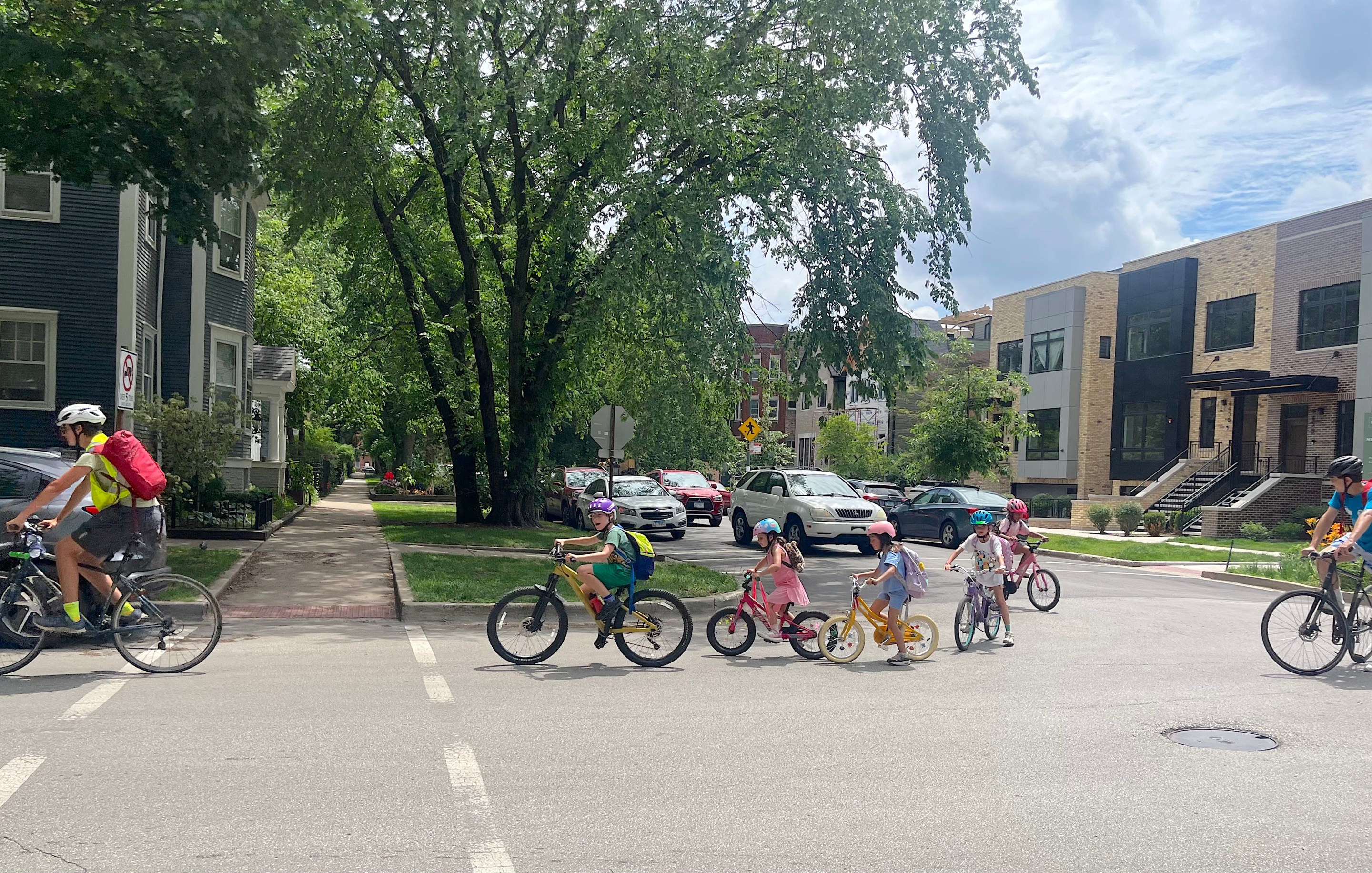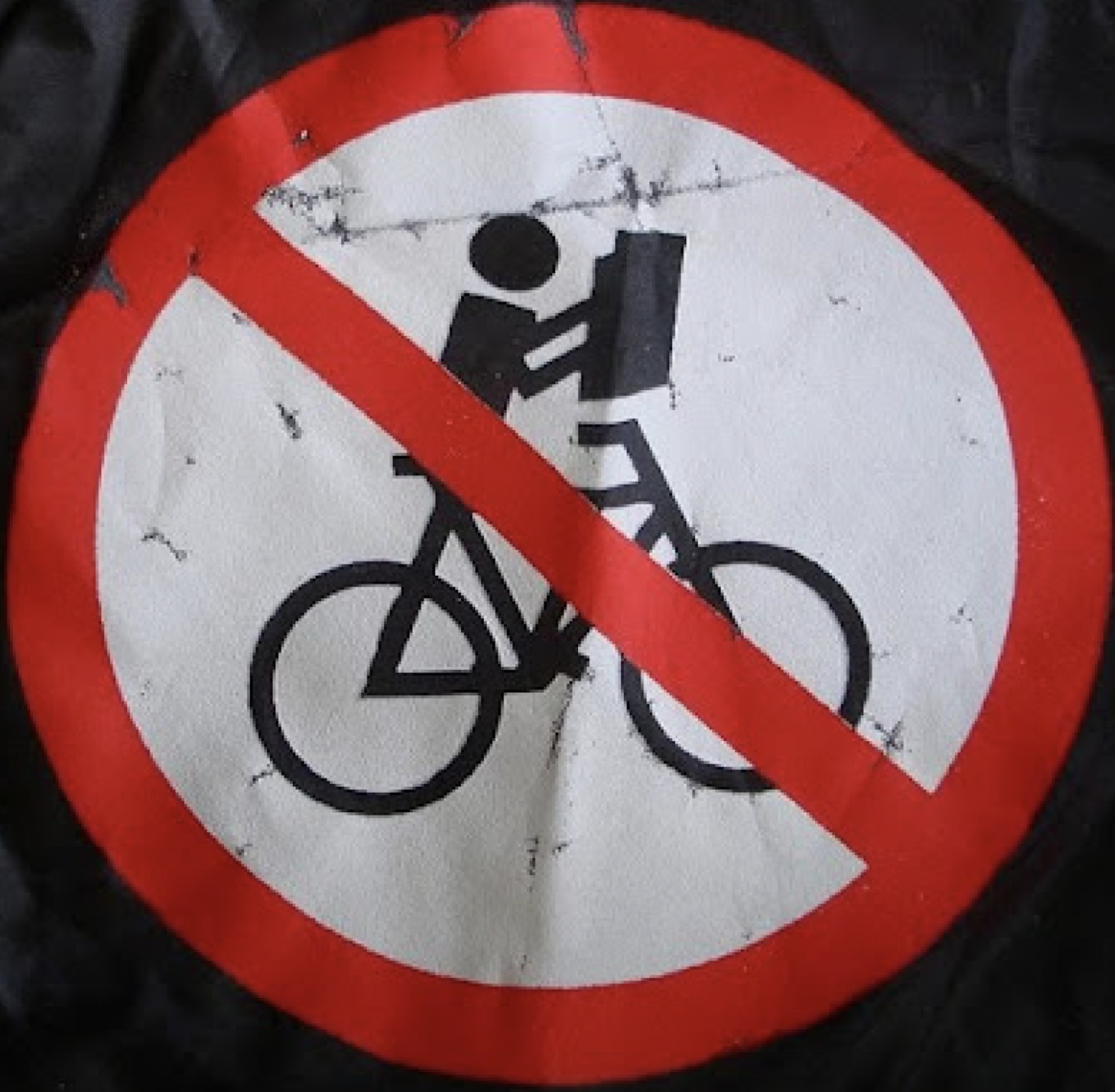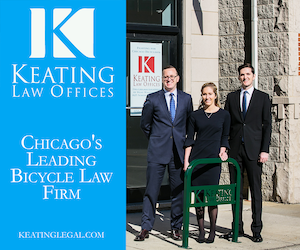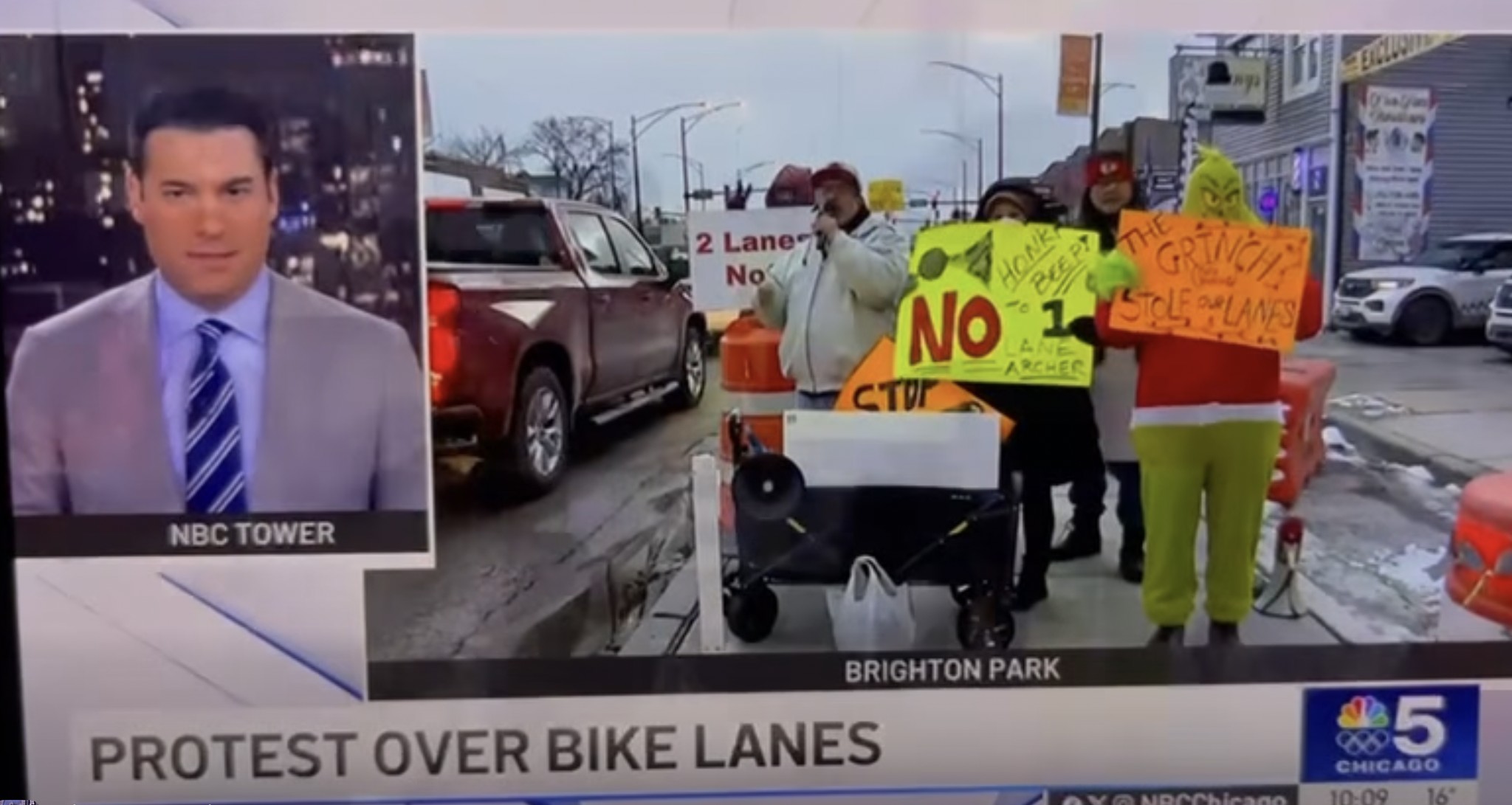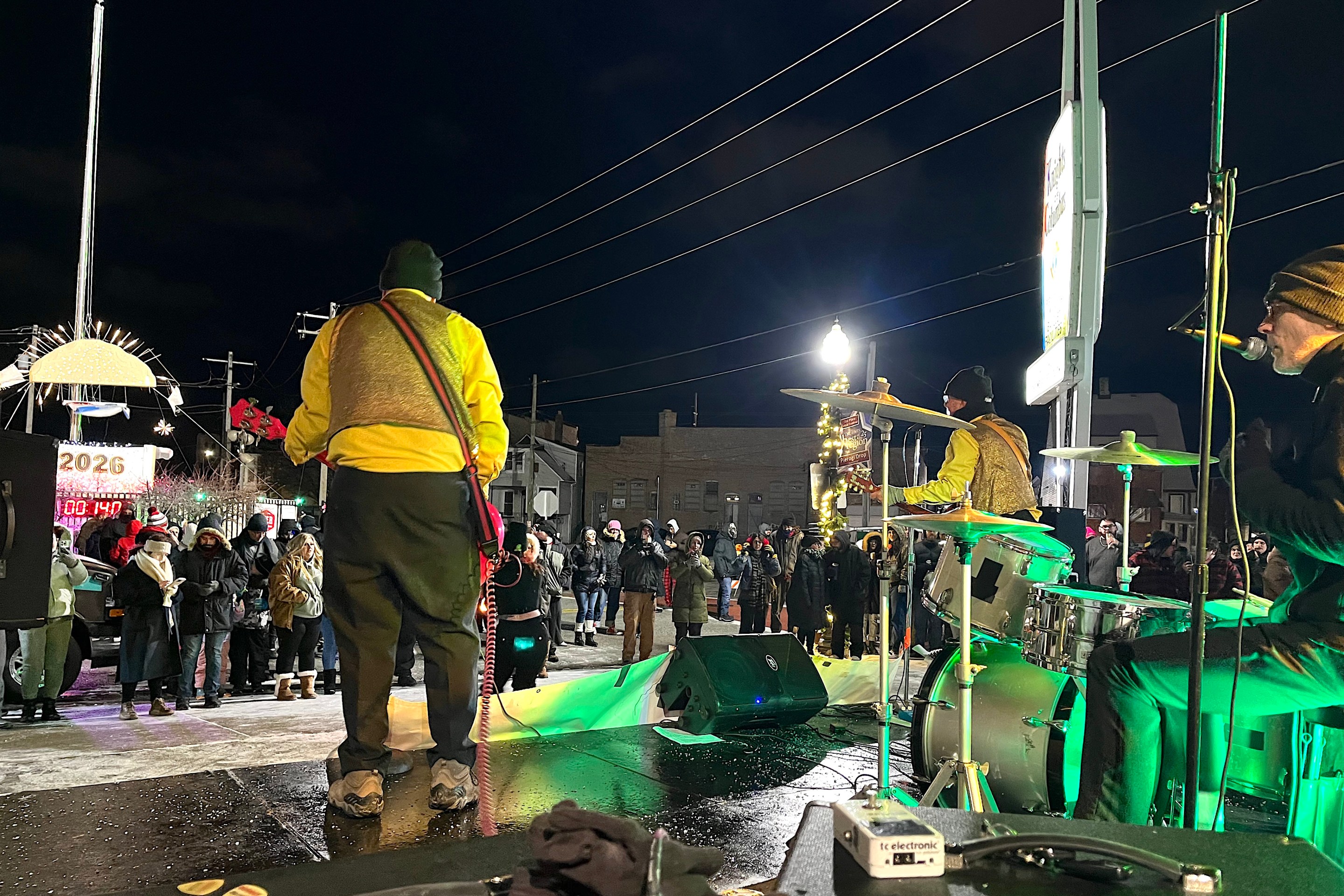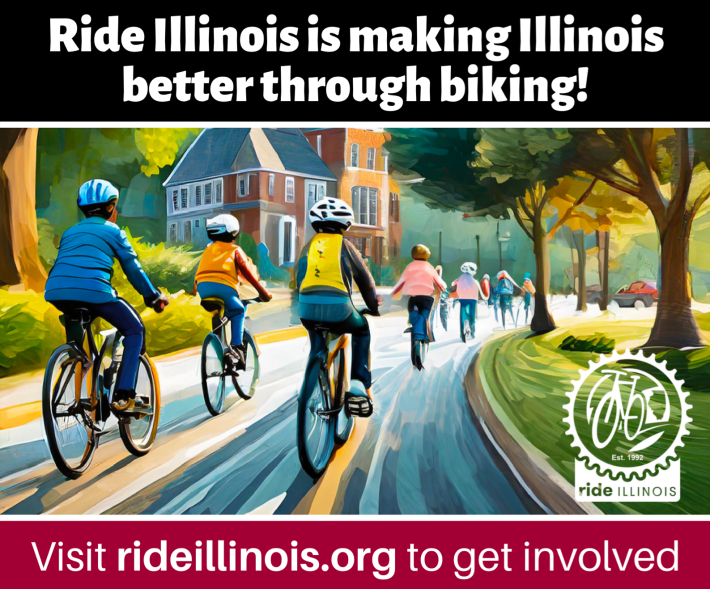
Check out People For Bikes 2025 City Ratings report here.
Check out their 2025 ratings for Chicago here.
Happy Friday, Streetsblog Chicago readers. I've written about the Boulder-based advocacy nonprofit People for Bikes' unreasonably dismal ratings of our city's bikeability so many times, today I'm giving myself an assignment today to keep things interesting. I'll try to make this post completely snark-free. But please cut me some slack if I slip up once or twice.
In a nutshell, PFB's annual City Ratings report gave Chicago dreadful numbers in 2020, 2021, 2022, 2023, and 2024. To take a glass-half-full attitude, this year the rating for the Windy City improved by 22 percent. That is, last year they gave us nine points out of a possible 100, and in 2025 they gave us 11 points. Beats going downhill, figuratively, right?
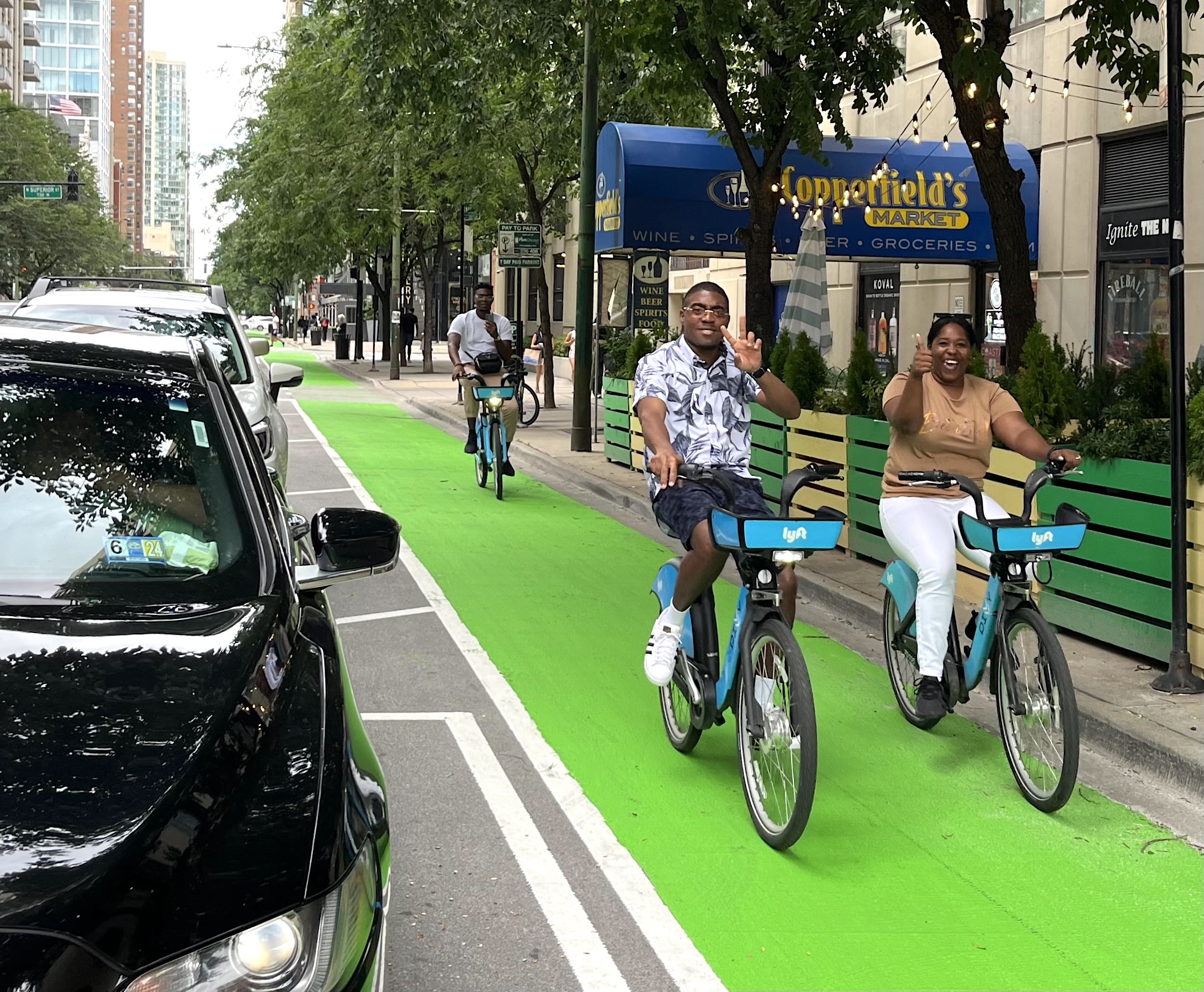
This year PFB ranked Chicago at 2,497th place out of 2,901 cities worldwide, putting us in the lower 14 percentile. We were ranked at 2,137th in the U.S., 512th in the Midwest, and 60th in Illinois. Are there really 58 municipalities in the Land of Lincoln that are more bike-friendly than our city, other than Evanston?
As usual, Chicago's ranking among big U.S. cities is what's particularly dubious. Out of 74 places in our country with populations of 300,000 or greater, our city is tied with notoriously car-centric Houston for 7th from last. Sadly, there were five reported bicycle fatalities in Chicago in 2024, which is roughly the annual average here. The Texas city, with about 400,000 fewer residents than ours, saw eight bike deaths last year, according to the Houston Chronicle. That's the lowest number of cycling fatalities in that city since 2017. Shockingly, there were 16 fatal bike crashes in Houston in 2023.
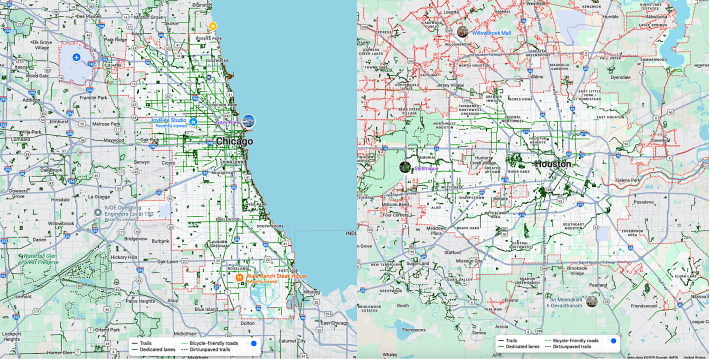
The ten-highest ranked burghs in the People for Bike report generally seem like reasonable choices, assuming you don't think it's strange to call each of NYC's five boroughs a "city." These are 1. Brooklyn 2. Minneapolis 3. Seattle 4. Queens (are Archie Bunker's stomping grounds really that bike-friendly nowadays?) 5. San Francisco 6. St. Paul 7. New York City (OK, now I'm a little confused) 8. Portland, OR 9. Philadelphia 10. Washington D.C.
Sure, I can respect the argument that these are currently better places to ride a bike than the Second City. But how about Cleveland (37-point rating out of 100 compared to Chicago's 11), Omaha (36 points), Atlanta (31), Los Angeles (25), or Jacksonville (18)?
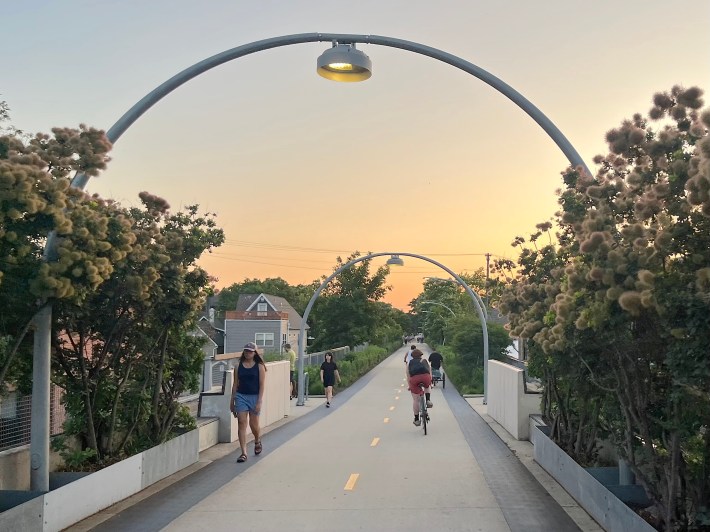
As I've stated before, Jacksonville's higher ranking is particularly strange. In the late 2010s (I assume not much has changed since then), that Florida city had less than half of Chicago's 1.7 percent bike mode share. Meanwhile, tragically, Jacksonville had about six times Chicago's bike fatality rate.
As was the case in previous years, these bizarre rating discrepancies are largely due to People for Bikes' policy of giving way too much weight to a city's default speed limit. Chicago's is 30 mph, but just about every peer city with a 25 limit got a better ranking, no matter how much worse street design, infrastructure, transportation policy, and bike fatality rates are in those places.
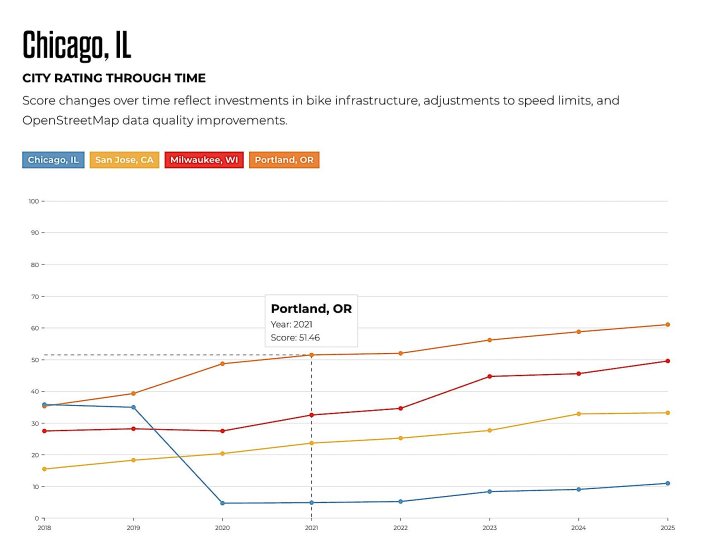
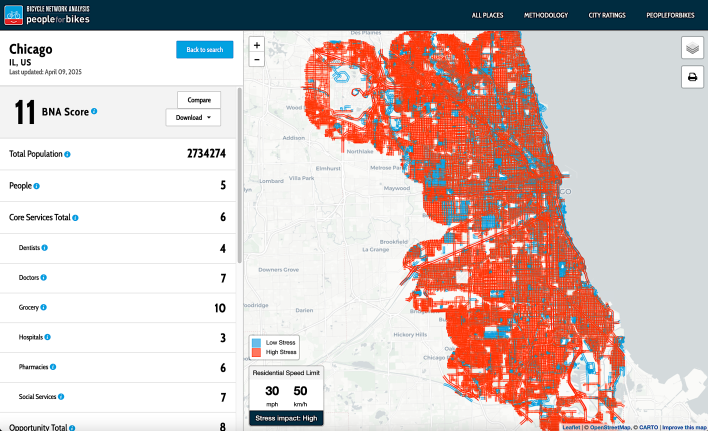
On the bright side, the fact that Chicago's 30 mph speed limit is the main reason our city has such embarrassing City Ratings numbers is a helpful argument for lowering it to 25. That is, in fact, something we badly need to do.
Last February, a proposed ordinance to lower the limit was voted down in 28 to 21 in the City Council. Data from peer cities that implemented 25 mph limits years ago strongly indicate that more Chicagoans will die in crashes as a result of this decision.
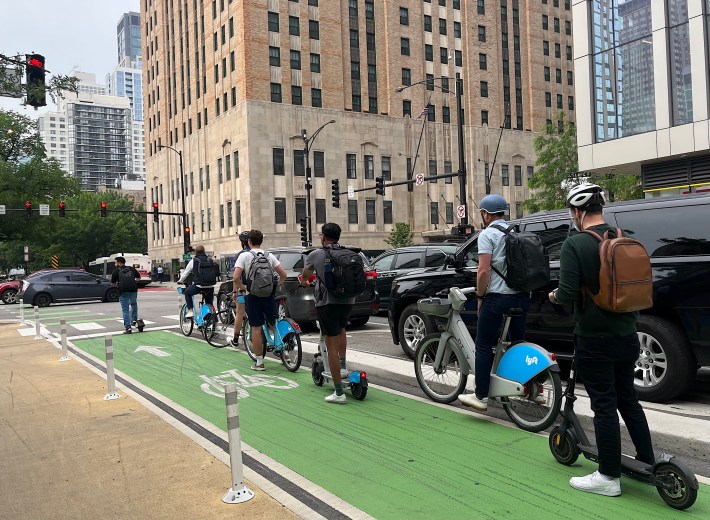
Here's a quick recap of other things The City That Works needs to do to make cycling safer, whether or not People for Bikes gives us credit for it.
• Continue installing plenty of bike lanes, with concrete-protected and/or raised lanes being the standard.
• Make protected intersections the default, to lower the risk of turning motorsts hitting bike riders.
• Nix alderpersons' power to veto bike projects through aldermanic prerogative.
• Eliminate the need on for alders to use their discretionary "menu" money to fund bikeways, so lanes get installed in every district, not just bike-friendly ones.
• Focus on installing long, continuous low-stress bike routes citywide, instead of short snippets delineated by ward boundaries.
• Employ more Complete Streets planners and engineers at the Chicago Department of Transportation.
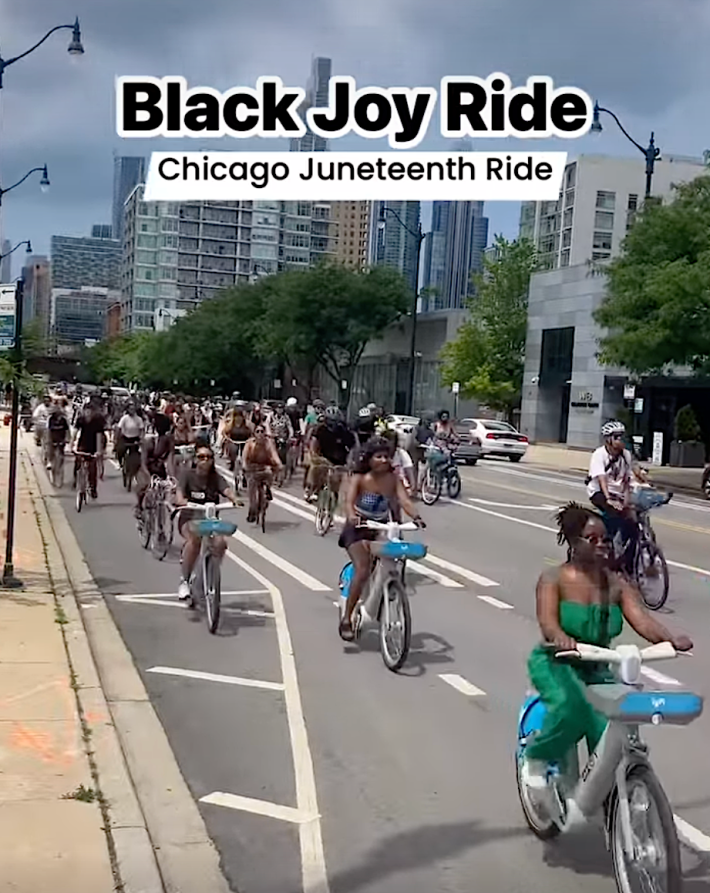
Let's me wrap up this (fairly sarcasm-free so far, yes?) article with some of the responses to PFB's latest rating of Chicago as one of the very worst bike cities, from our Facebook followers.
Evan Druce: "Chicago Mayor's Office surely at this point you can get a majority of alders to lower the citywide speed limit to 25?"
Ashley Asmus: "As a former Minneapolis/St. Paul resident and current cyclist, I agree." Response to Asmus from Eric Bruce: "As someone who lived in other higher ranked cities, I strongly disagree."
Andrew Mack: "It's a pretty good city to bike in. It could be a lot better though. More needs to be done to make it a great walking city too. Good walking cities are usually good biking cities. Reducing the speed limit would be good for pedestrians, cyclists, etc."
Richard Ragmar Sammartino: "Great city to bike in, just not a safe city to bike in. Speed Limit, bike lanes with no intersection support, class-3 and higher electric vehicles speeding in bike lanes, wrong way traffic in bike lanes, pedestrians walking in bike lanes, drivers who do not understand Yield, etc, etc."
Alejandra Camacho: "More protected bike lanes would be better than an official speed limit that nobody follows anyways."
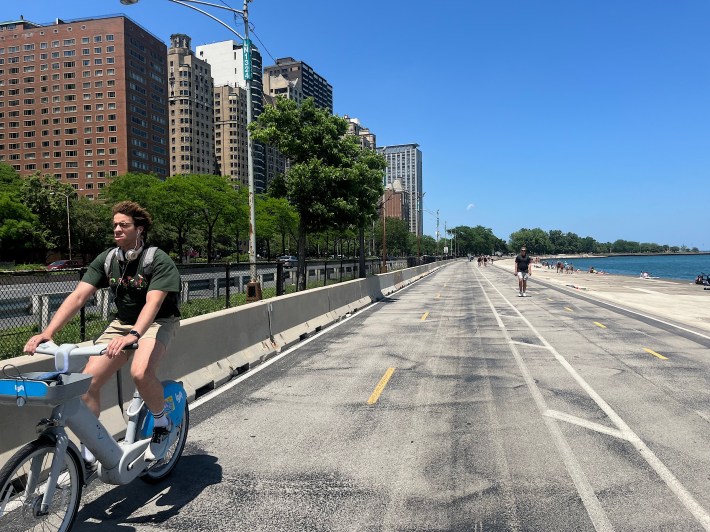
Pete Curtner: "3/4 of my daily commute is lovely, or at least good enough, cause that’s on the [Lakefront Trail]. The part of my daily commute to get to the LFT is terror."
Check out People For Bikes 2025 City Ratings report here.
Check out their 2025 ratings for Chicago here.
Read more of the Facebook responses here.

Did you appreciate this post? Streetsblog Chicago is currently fundraising to help cover our 2025-26 budget. If you appreciate our reporting and advocacy on local sustainable transportation issues, please consider making a tax-deductible donation here. Thank you!
